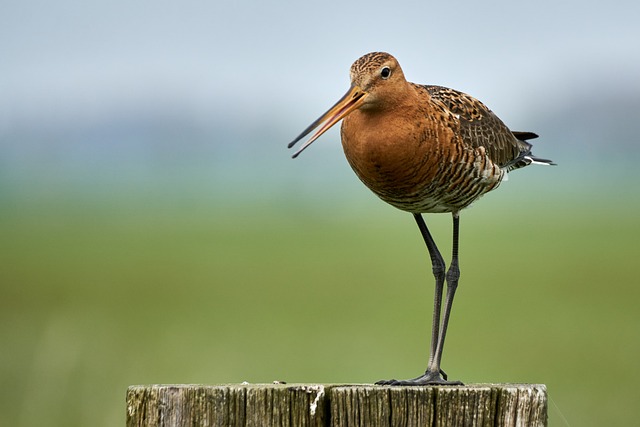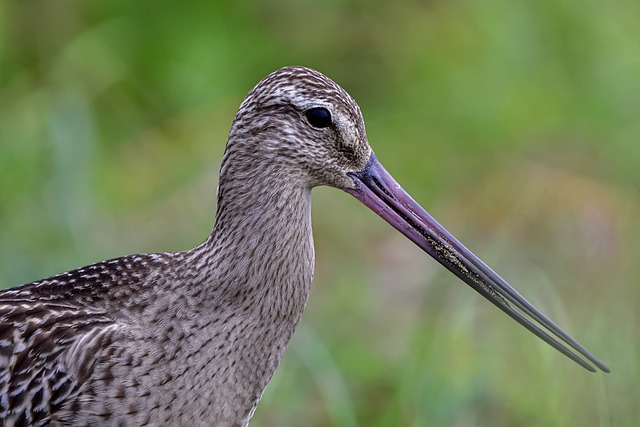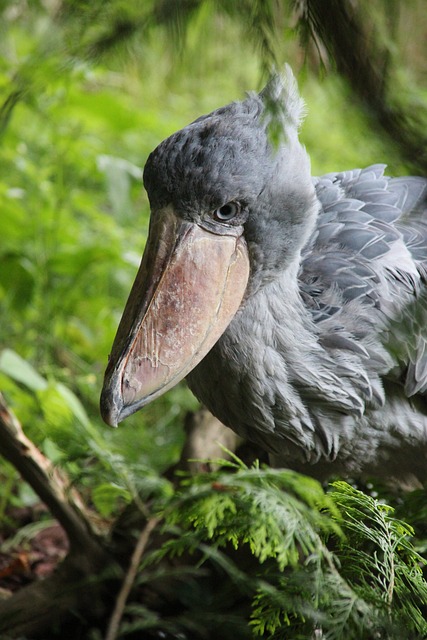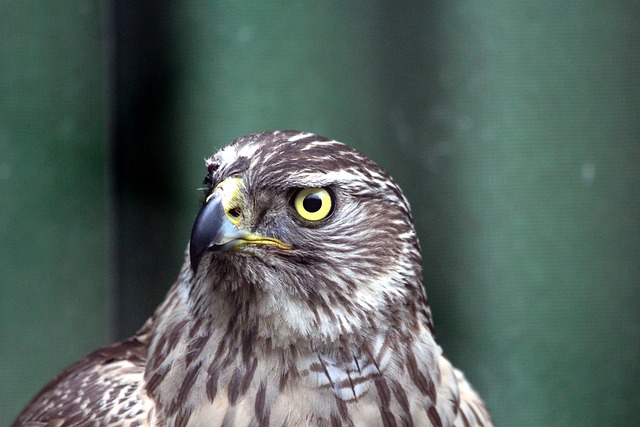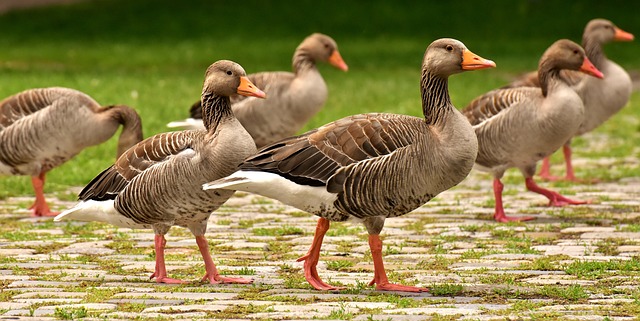The Little Grebe, also known as the Dabchick, is a small aquatic bird found in the temperate regions of Europe, Asia and Africa. It is a member of the Podicipedidae family and is easily recognizable due to its size, bright yellow eyes and distinctive calls. It is a popular bird among birdwatchers as it is very active and entertaining to watch.
Introduction
The Little Grebe is an excellent swimmer and diver, and it can stay underwater for up to half a minute while it searches for fish. It feeds primarily on small aquatic animals such as crustaceans, mollusks and amphibians. It prefers to inhabit shallow freshwater wetlands, such as marshes, ponds and lakes. It is a migratory species, with some populations migrating seasonally and others remaining in the same area year-round.
The Little Grebe has a unique biology, with some interesting physiological features. It has a short, thick neck and a flat bill, which allows it to dive quickly. It has webbed feet and a long tail that is used for agility in the water. Its plumage is unique, with a dark brown head and neck, a white and grey chest, and a white belly and tail.
The Little Grebe is a social bird and can often be found in large groups. During the breeding season, they form pairs and establish territories. The males are often very territorial and will defend their territory fiercely from intruders. They are monogamous and remain in a pair for multiple breeding seasons.
The Little Grebe is an interesting species and it is important to learn more about it and understand it better. In this article we will discuss the Little Grebe’s physical features, natural habitat, diet, behavior, breeding habits and conservation efforts. We will also share some interesting facts about this species.
Diet
The diet of the Little Grebe is mostly made up of fish, aquatic insects, and crustaceans. They also consume small amphibians, mollusks, and even aquatic plants. The Little Grebe is a surface feeder, meaning it feeds on the surface of the water.
The majority of the Little Grebe's diet is composed of fish. Fish make up almost 80% of the bird's diet in the summertime. Smaller fish and minnows are the preferred food of the Little Grebe. They will also feed on adult fish, but prefer the smaller creatures due to their speed and agility.
The Little Grebe also feeds on aquatic insects and crustaceans. The bird is known to feed on aquatic insects such as beetles, dragonflies, and water boatmen. Crustaceans make up a small portion of the Little Grebe's diet, but they can also feed on shrimp, crayfish, and crabs.
The Little Grebe will also consume small amphibians, mollusks, and aquatic plants. The bird will feed on small frogs, salamanders, and snakes. Mollusks such as snails and mussels are a favorite food of the Little Grebe. Aquatic plants are also a part of the bird's diet, with waterweed being the most common plant consumed.
The Little Grebe will also supplement its diet with a variety of other animal and plant matter. It can feed on larvae, egg sacs, small mammals, and carrion when available. It will also consume various types of seeds, berries, and fruit when it is available.
The Little Grebe is a very opportunistic feeder and will take advantage of any food source that is available. This helps it to survive in a variety of different habitats and ecosystems. The bird has the ability to quickly adapt its diet to whatever is available in its environment.
Behavior
The behavior of the Little Grebe has been studied closely, and researchers have observed many interesting traits. Little Grebes are known for being highly social when in groups and they often form close bonds with one another. They gather together in large flocks and when searching for food, they split up and work together to cover more ground.
Mating Habits:
Little Grebes are monogamous and form long-term relationships that can last up to five years. When the breeding season arrives, males will engage in courtship displays to attract a mate. These displays involve a variety of behaviors including head bobbing, jostling, and a special vocalization called a “whistle-chirp”.
Social Habits:
Little Grebes are very social creatures and often form large flocks. They are highly social when in groups and will often swim together in large circles or swim alongside one another in a line. They are also known to travel in large groups and will often gather in communal roosts at night.
Behavior in Danger:
Little Grebes are very alert birds and will react quickly to potential threats. When they sense danger, they will dive underwater and hide among the vegetation. They can stay underwater for long periods of time and will resurface when the danger has passed.
Little Grebes are also known for their boldness when defending their territory. They will dive and lunge at intruders in an attempt to drive them away. They may also emit loud calls or “screams” in order to ward of potential threats.
Little Grebes are a highly social species and their behavioral traits have been studied in great detail. They form strong bonds with one another and will protect their territories with boldness and courage. They are also very alert birds and will dive and hide quickly when they sense danger. All of these traits make the Little Grebe an interesting and unique species.
Breeding
The little grebe is a monogamous species that engages in a courtship ritual to find a mate. The courtship ritual consists of the male bird performing a series of aerial displays over the female bird while singing to her. During this time, he will also present her with gifts such as feathers and twigs.
Once the couple has bonded, they can begin nesting. They will usually build a nest of reeds, grass, and other aquatic vegetation near the water’s edge. They may also build their nest on floating vegetation or on the bank of a pond. The female will lay 2-5 eggs in the nest and will incubate them for 21-25 days.
The male and the female will share the responsibility of incubating the eggs and will take shifts. The male will also provide food to the female during this time. The chicks will hatch in the nest after about 21-25 days. They are born with a layer of down and are capable of swimming and diving shortly after hatching.
The chicks will stay in the nest for 10-13 days until they are fully feathered. After this time, they will join the flock. The parents will continue to provide food for the chicks for 6-7 weeks, and the chicks will reach their full size by this time.
The little grebe is a seasonal breeder, and most pairs will breed once a year. However, in some cases, they may breed twice a year. The season for breeding can vary depending on the habitat and climate of the area.
The little grebe can live up to 17 years in the wild, and the pairs will usually stay together for the duration of their lives. In some instances, a pair may choose to find a new mate if one of the birds has died.
Fun Facts
The little grebe is a fascinating creature that has numerous interesting features and characteristics. One of the most interesting facts about the little grebe is that it has an incredible adaptation to its environment. Its feathers are oiled, which helps them stay waterproof and repel water from their feathers, allowing them to keep warm even in the most extreme temperatures.
The little grebe also has an interesting way of communicating with its fellow species. They use a variety of whistles, clicks, and honks to express their feelings to one another. They also use distinctive movements of their heads and bodies to communicate with each other.
Another interesting feature of the little grebe is their mating habits. They are monogamous and typically form strong, long-term relationships with their mate. The mating pair will build a nest together, typically in a shallow water area, and will remain together for the entire breeding season. They also take turns incubating their eggs, with the female taking the majority of the incubation duties and the male taking shifts to hunt for food and guard the nest.
The little grebe has a variety of interesting behaviors in the face of danger. They will often dive into the water and hide under plants or debris to escape predators. They also have the ability to rapidly take off from the water and fly away if the need arises.
The little grebe also has a unique diet. They feed primarily on aquatic invertebrates, such as mollusks, crustaceans, and insect larvae. They also supplement their diet with small fish, tadpoles, and amphibians. They often hunt for food in the early morning or late evening.
Finally, the little grebe is an important species for conservation efforts. They are currently listed as vulnerable on the IUCN Red List and are facing a variety of threats, including habitat fragmentation, pollution, and invasive species. Conservation efforts are underway to protect and preserve their habitat and ensure the continued survival of the species.
In conclusion, the little grebe is a fascinating species with many interesting features and behaviors. They use a variety of whistles, clicks, and honks to communicate with their fellow grebes. They are monogamous and form strong, long-term relationships with their mates. They have an incredible adaptation to their environment with oiled feathers to stay waterproof. They also have a unique diet and behaviors in the face of danger. Finally, they are an important species for conservation efforts to protect and preserve their habitat.
Conclusion
The Little Grebe is an incredibly unique and interesting species. This article has provided an overview of the physiology, habitat, diet, behavior, breeding, and conservation of the Little Grebe.
The Little Grebe’s diet consists of a wide variety of aquatic organisms, including insects, crustaceans, mollusks, worms, and fish. These birds also supplement their diet with plants. Mating habits of a Little Grebe involve elaborate displays and vocalizations. Social habits include living in groups, migrating, and nesting. When in danger, these birds rely on their camouflage and diving abilities to avoid predators.
Nesting habits of the Little Grebe involve building a nest in shallow water, laying four to seven eggs at a time, and incubating them for a period of three weeks. Unfortunately, there are a number of threats to the species, such as habitat destruction, hunting, and pollution. Conservation efforts are being made to protect the Little Grebe and its habitat.
Finally, some interesting facts about the Little Grebe include its ability to dive underwater for up to two minutes, its remarkable camouflage capabilities, and its unique adaptations for diving. It is important to remember the importance of conservation when dealing with this species, as it is essential for its continued survival.
In conclusion, the Little Grebe is an amazing species with unique behaviors, diet, and adaptations. It is important to remember the importance of conservation when dealing with this species, as it is essential for its continued survival.


